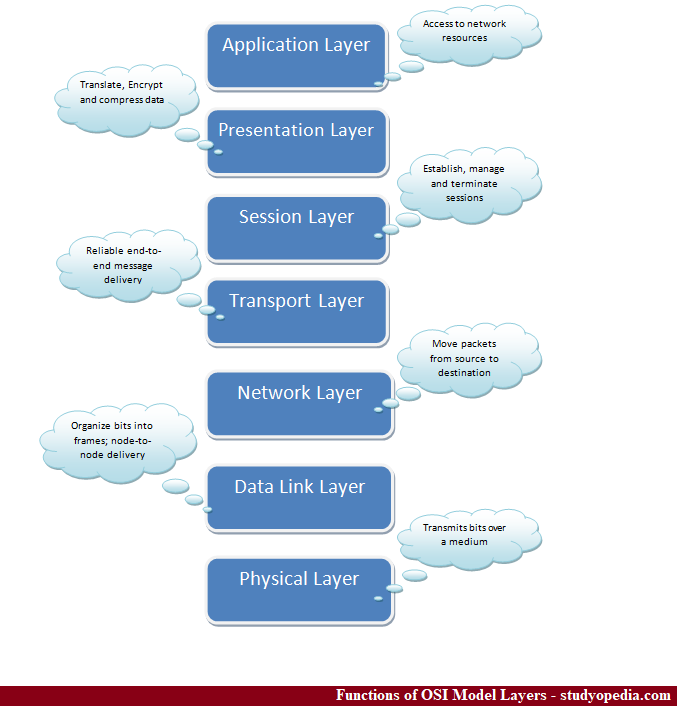19 Apr OSI Model 7 Layers
In the last lesson, we learned about OSI Reference Model, how it works, how the 7 layers are organized, etc. Here, we will see the summary of the OSI Model 7 Layers.
Let us start with the Physical Layer,
Physical Layer of OSI Reference Model
Physical Layer is a layer in the OSI Model that transmits raw bits over a physical medium.
Data Link Layer of OSI Reference Model
The second layer in the OSI Model is Data Link Layer that transforms the physical layer to a reliable link and error free to the network layer.
Network Layer of OSI Reference Model
Network Layer is responsible for source to destination delivery of a packet. The lower layer, Data Link, checks the packet delivery between two systems on the same network.
Transport Layer of OSI Reference Mod
The Transport Layer is responsible for end-to-end delivery of the entire message. It makes sure the message arrives in order, with both error and flow control.
Session Layer of OSI Reference Model
The Session Layer is the network dialog controller that establishes interaction between communicating systems. The layer also maintains and synchronizes the interactions.
Presentation Layer of OSI Reference Model
As the name suggests, the presentation layer is for the syntax and semantics of the exchange between systems.
Application Layer of OSI Reference Model
The Application Layer provides support for E-Mail, shared database management, remote file access, etc.
The following is a figure display the function of each layer,

We learned about each layer above. Now let us start understanding each layer thoroughly in the upcoming lessons, beginning with Physical Layer i.e. the 1st layer in OSI Model.


No Comments